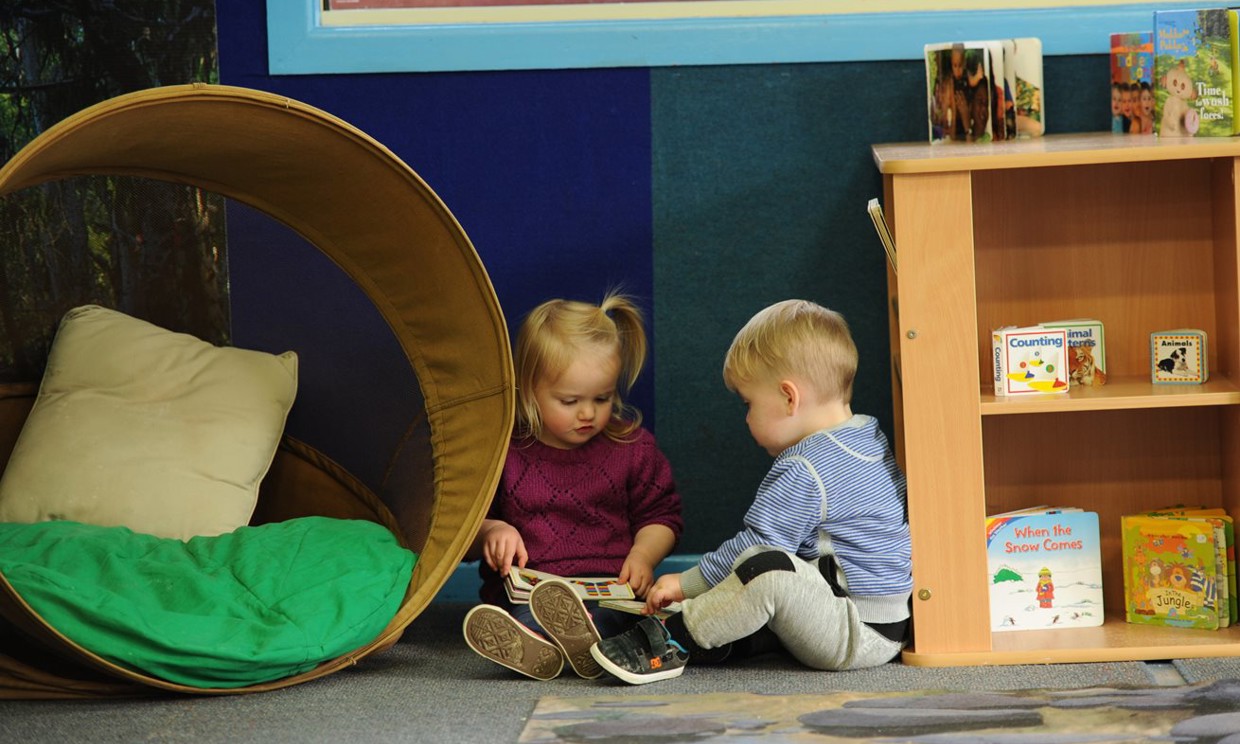When children first step foot in early learning centres, they can be overwhelmed by the colours, the noise and the movement around them.
Colourful artworks, photographs and signs often decorate the rooms, along with containers of paints, bright blocks and furniture.
But could all of this visual noise be more disruptive than beneficial to children?
Research shows early learning rooms with less work on display can dramatically improve the behaviour of the young children within them.
Goodstart Early Learning capability national manager Dr Lisa Palethorpe said Goodstart Early Learning centres were moving towards spaces with less visual noise.
“We have centres that have absolutely seen children do a full 180 once they removed all the visual noise,” Dr Palethorpe said.
“Sometimes we put artwork up on the ceiling where the children can’t even see it, or we put work folders where only the parents can reach them.
“We need to be thinking more about the children, but also creating calm environments that don’t overstimulate children,” she said.
She said environments were recognised as being so important to children’s learning, development and wellbeing that in Goodstart Early Learning’s Practice Guide “space” takes up an entire component.
“The Practice Guide tells us that environments influence people’s moods and behaviour. Along with this, research also show us that quality early learning environments impact brain development,” she said.
“It is therefore reasonable that we can say that the environment has a profound and potentially long-lasting effect on children’s learning development and wellbeing.”
Dr Palethorpe, and The Practice Guide, state that well-organised, thoughtful and calm environments can have a long lasting positive effect on children’s ability to tolerate stress and in fact help to diminish stress.
A second benefit for a well organised environment is that they encourage children to collaborate and cooperate, all skills necessary for success in our social learning world (Ogu and Schmidt, 2013).
“We must plan and think about how the environment will speak to children. What will the colours say? How the room will support certain behaviours? And how the room will inform children and their families that they are valued, important and that you belong.”
Tips for designing successful play spaces for your children
Colour
Think about colours. Many people think that children naturally prefer or gravitate towards bright colours, but it’s neutral colours such as cool blues and greens that support our children to feel emotionally and physically at ease.
Furnishings
We want to create learning environments that feel comfortable and inviting so paying attention to the use of soft furnishings, interesting textures, thoughtfully placed art, plants and objects can all help to transform an early learning environment to a cosy space for learning.
Natural Light
Natural light is particularly important for us as human beings, in fact recent Australian research has found a correlation with the lack of natural light and eye disease. Natural light provides the opportunity for children to explore shadows, light refraction, coloured liquid in bottles hanging from the ceiling to support thinking about transparency and colour.


